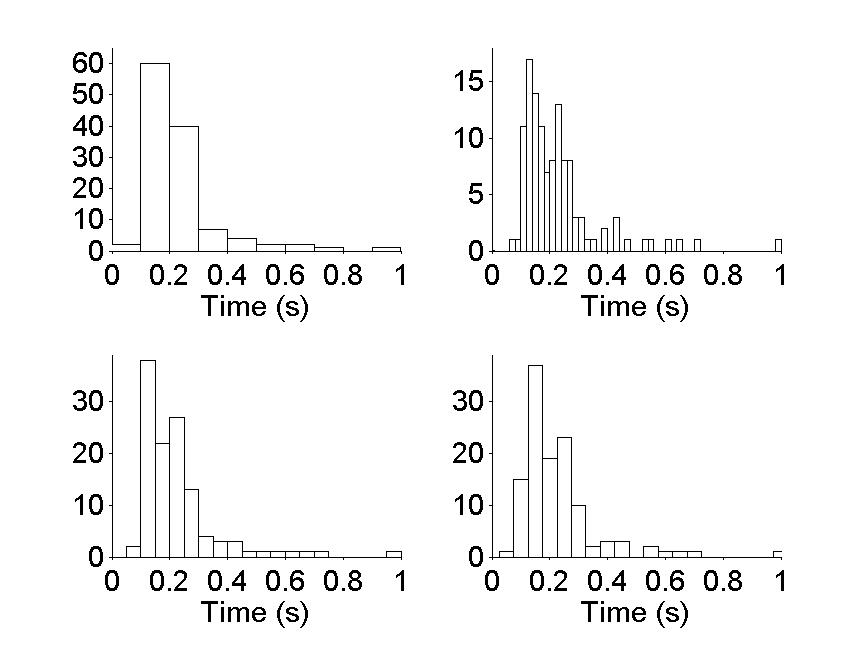% This code creates four histograms showing saccadic reaction time
% data. The data is the same in each histogram, but histograms 1-3
% have different bin sizes, while histogram 4 has the same bin size
% as histogram 3, but uses shifted bins.
%
% Figure caption: Four histograms of saccadic reaction time data.
% The same data are used in each histogram. The appearance of the
% data distribution depends on details of histogram creation. The
% first three histograms have different bin sizes. The fourth
% histogram uses the same bin size as the third, but shifts the
% bin locations slightly.
patient1 = csvread('p3359b.csv', 0, 0);
% Initialize a figure with four subplots. Changing 'Position' sets
% the position and size of the figure. In this case, 200 pixels from
% the left, 100 from the top, 800 pixels in width and 600 in height.
figure
set(gcf, 'Position', [200, 100, 800, 600])
% First we set up the histogram bin locations for all four histograms.
bins = { 0.05 : 0.1 : 0.95 , ...
0.01 : 0.02 : 0.99, ...
0.025 : 0.05 : 0.975, ...
0.0 : 0.05 : 1.0 };
% We'll also need different y limits and y tickmarks for each
% histogram.
yLimits = { [0, 65] , [0, 18], [0, 39], [0, 39] };
yTickMarks = { 0:10:60, 0:5:15, 0:10:30, 0:10:30 };
% We loop here so we can choose graphical parameters once, and not
% set them repeatedly for each histogram.
for i = 1:4
subplot(2, 2, i)
histBins = bins{i}
yLimits = yLimits{i}
yTickMarks = yTickMarcks{i}
hist(patient1, histBins))
% Set graphical parameters, including the (varying) limits and
% tick-marks for the y-axes.
set(gca, 'Box', 'off', 'FontSize', 18, ...
'XLim', [0, 1], 'Ylim', yLimits, ...
'XTick', 0:0.2:1, 'YTick', yTickMarks, 'TickDir', 'out')
% The next two lines find the handle of the plotted object (called a
% "patch") and set its color to white ('w'). These are the same in each
% histogram.
spikehist = findobj(gca, 'Type', 'patch');
set(spikehist, 'FaceColor', 'w')
xlabel({'Time (s)'}, 'FontSize', 18)
end

